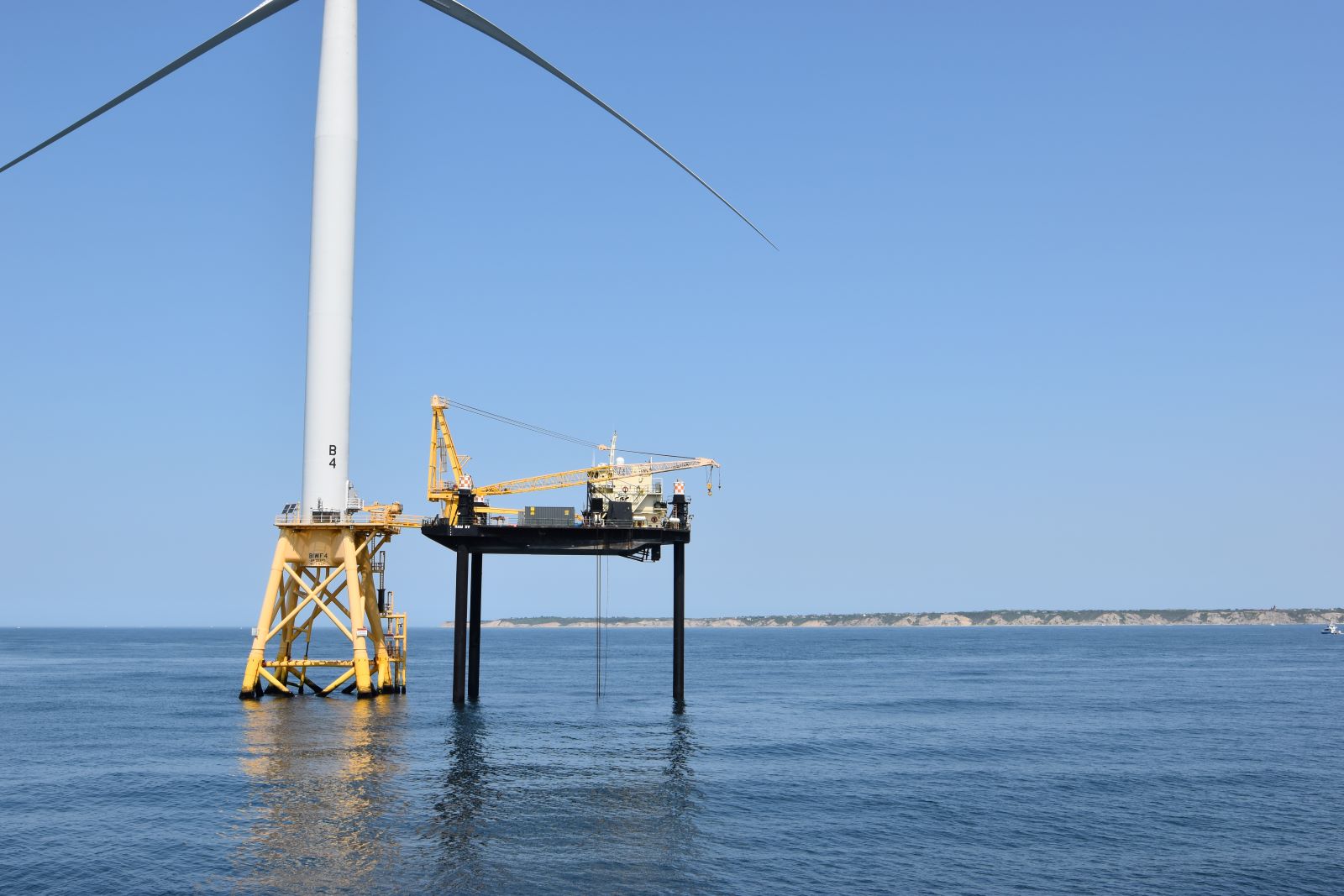‘Now Is the Time’ for Offshore Wind, U.S. Energy Official Says; R.I. on Leading Edge
June 5, 2023
NORTH KINGSTOWN, R.I. — Offshore wind is having its moment, said U.S. Secretary of Energy Jennifer Granholm at a Quonset roundtable during a visit to the state Friday, and it’s only going to get bigger.
“I hope you feel the moment we’re in,” Granholm said. “If you ever wanted to work in this space, now is the time.”
On June 2, Granholm, together with Gov. Dan McKee, Rhode Island’s congressional delegation, and other state officials, took a three-hour tour of the Block Island Wind Farm, the first operational offshore development in the nation.
The five-turbine, 30-megawatt facility, a few miles off Block Island, became operational at the end of 2016, and generates power for both New Shoreham residents and communities on the mainland. At the time, the project was seen as something of a proof-of-concept development for offshore wind in the United States, with dozens of proposed projects springing up in the years since.
State officials last week were keen to celebrate Rhode Island’s status as first in the nation for offshore wind, emphasizing the industry’s track record for job creation and noting the amount of greenhouse gas emissions expected to be reduced by the projects.
“We’re headed toward a carbon emission reduction of 40% by 2030,” Sen. Jack Reed, D-R.I., said. “That will make a huge difference to the generations that follow us.”
In the years since the Block Island Wind Farm came online, the state has doubled down on offshore wind. Last year the General Assembly passed legislation expanding the state’s offshore wind procurement from 600 to 1,000 megawatts (MW), enough to meet at least 30% of Rhode Island’s electricity needs by 2030, powering up to 340,000 homes a year.
McKee, who announced the request for proposal (RFP) on the procurement in October, said Friday the RFP process was ongoing.

Officials from the Rhode Island Office of Energy Resources (OER) said they expect the influx of federal money from the Infrastructure Investment and Jobs Act (IIJA) and Inflation Reduction Act (IRA) to supercharge the state’s efforts to electrify homes and vehicles, outlining the ways the state will benefit from those laws.
The state is receiving nearly $62 million for home rebates; $32 million for energy performance-based rebates; and $31.8 million for energy-efficiency upgrade rebates. OER is also receiving another $22.9 million to expand the state’s electric vehicle charging station network, and is applying for another $15 million in federal dollars from the Charging and Fueling Infrastructure Program toward the same cause.
The state is receiving another $3.2 million for the State Energy Program, and $12.6 million for grid resilience.
Offshore wind projects have mushroomed at the state level as well. The state’s coastal regulator, the Coastal Resources Management Council, has its hands full reviewing the impact offshore wind projects in lease areas 20 miles south of Martha’s Vineyard may have on Rhode Island’s coastal waters, habitats, and economy.
The agency, which only has a few staff members dedicated to offshore wind, including the CRMC director, had earlier awarded final approval to the 704 MW Revolution Wind project, which will land its export cables and tie into the regional electric grid at Quonset to provide power to Connecticut and Rhode Island.
Sen. Sheldon Whitehouse, D-R.I., singled out the work done by CRMC past and present to prepare Rhode Island for offshore wind, lauding it as a model that should be replicated nationwide.
“This happened because really good state employees did really good work for a long time with great stakeholder engagement,” he said.
The Revolution Wind project would place 65 turbines across 84,000 acres 15 miles southwest of Point Judith. The project still needs approval from the federal Bureau of Ocean Management, and construction could start next year.
Revolution Wind was widely opposed by commercial and recreational fishermen, who told coastal regulators they feared losing valuable fishing grounds and the possible damages that could be done to marine life and the seafloor ecosystem.
At the recent roundtable, Whitehouse acknowledged the impacts to fishing and other issues with offshore wind, including permitting reform for projects to get them online quicker, and a desperate need to increase the incentives to Gulf states to encourage a renewable energy transition. He noted that Gulf states receive 37 cents on the dollar for natural gas and oil and virtually nothing for offshore wind.
“There are headwinds in offshore wind that need to be addressed,” said Whitehouse, adding that he had introduced legislation federally to handle some of the issues.




You can never really have too much public engagement, but we all need filters for those who waste our time with phony science. RI continues to think of wind power and the rest of the decarbonization strategy as an add on to the economy. But it is time, right now, to think of our efforts to stave off catastrophe as the main deal in the economy and this is where all the investment in future productivity ought to go. Our future prosperity is at stake. So let us start that strategic and well thought retreat from the coast as well as transform how we generate usable energy. Let us also remember that we are just plain going to have to use less while at the same time dramatically reducing inequality in treatment and health hazards. as well as where we place harmful industries. We need precaution to be at the heart of our future development as on our precarious planet we need to first do no harm.